

| |
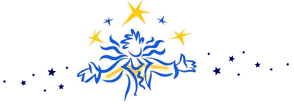 |
1991 |

THE VAGUE INTUITION
Throughout 1991, Nouvelle Expérience
continues on its travels across North America, opening up new cities – like
Atlanta – for Cirque du Soleil. By the end of an extensive 19-month tour of
Canada and the United States, 1.3 million (1,212,926) spectators have cheered
the show. Long before the house lights go down and the excitement begins to
build under the Grand Chapiteau, designers and craftspeople have put in months
of work behind the scenes to create the perfect costumes and makeup to bring life to a
cast of characters. Their work is about to pay off in ways they cannot
yet imagine. And Franco Dragone will help get them there...
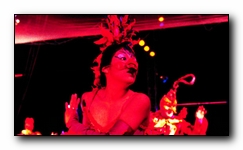
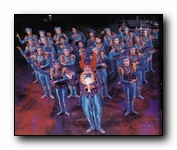
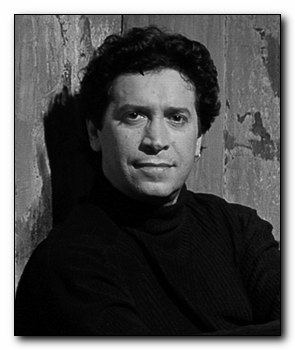 Franco Dragone was born in Cairano, Italy, and moved to La Louvière, Belgium
at age seven. In the 1970s, he studied theatre at the Belgian Royal Conservatory
of Mons. His earliest theatrical work was explicitly political, woring as a
director of theatre and film in the mode of the commedia dell'arte dramatist
Dario Fo. The theatre works he helped create expressed social situations,
interpreting true stories of the homeless, drug addicts and prison inmates, and
casting the non-actors that shared their stories to perform in the shows.
In the 1980s Dragone came to Montreal, Canada, where Guy Caron, director of
the National Circus School, invited him to conduct workshops with the students
and teachers there. Later, Dragone created, directed and produced a show for
the end of the school year. Guy Laliberté, saw one of these performances in
1984, the same year he formed Cirque du Soleil and as previously mentioned
sought out Guy Caron to join Cirque du Soleil. Caron, in turn, asked Dragone
to join as a creator and the rest is history.
Franco Dragone was born in Cairano, Italy, and moved to La Louvière, Belgium
at age seven. In the 1970s, he studied theatre at the Belgian Royal Conservatory
of Mons. His earliest theatrical work was explicitly political, woring as a
director of theatre and film in the mode of the commedia dell'arte dramatist
Dario Fo. The theatre works he helped create expressed social situations,
interpreting true stories of the homeless, drug addicts and prison inmates, and
casting the non-actors that shared their stories to perform in the shows.
In the 1980s Dragone came to Montreal, Canada, where Guy Caron, director of
the National Circus School, invited him to conduct workshops with the students
and teachers there. Later, Dragone created, directed and produced a show for
the end of the school year. Guy Laliberté, saw one of these performances in
1984, the same year he formed Cirque du Soleil and as previously mentioned
sought out Guy Caron to join Cirque du Soleil. Caron, in turn, asked Dragone
to join as a creator and the rest is history.
| |
"What we do is not circus, it's theater," says
Franco Dragone, the company's artistic director.
"It certainly is a circus, you just don't
like circuses," countered Gilles Ste-Croix, creative director. "You see, we
disagree about everything. This is exactly why we work so well together."
"It's not a circus, it is more than circus," Mr. Dragone said with his sly
smile. "It is a show that marries elements of dance, theater, mime and circus,
and creates something new, that goes beyond them."
|
Franco Dragone ushered in what fans refer to as the Cirque Renaissance, a
period where artistic creation and expression held balance with the company’s
ambition to take over the world. These are the shows that are considered –
hands down - the gold standards of Cirque du Soleil creations: shows that
built upon what came before and expressed their themes not in the literal
sense (that so many of Cirque du Soleil’s later productions would) but
rather in the Dragone’s signature esoteric avant-garde approach. An approach
that was shepherded and cultivated by a coven of creators that remained
relatively the same from production to production. And they would continue
doing great things throughout the 1990s...


|
|
|
|


![]()





![[Back]](../images/arrow.gif)


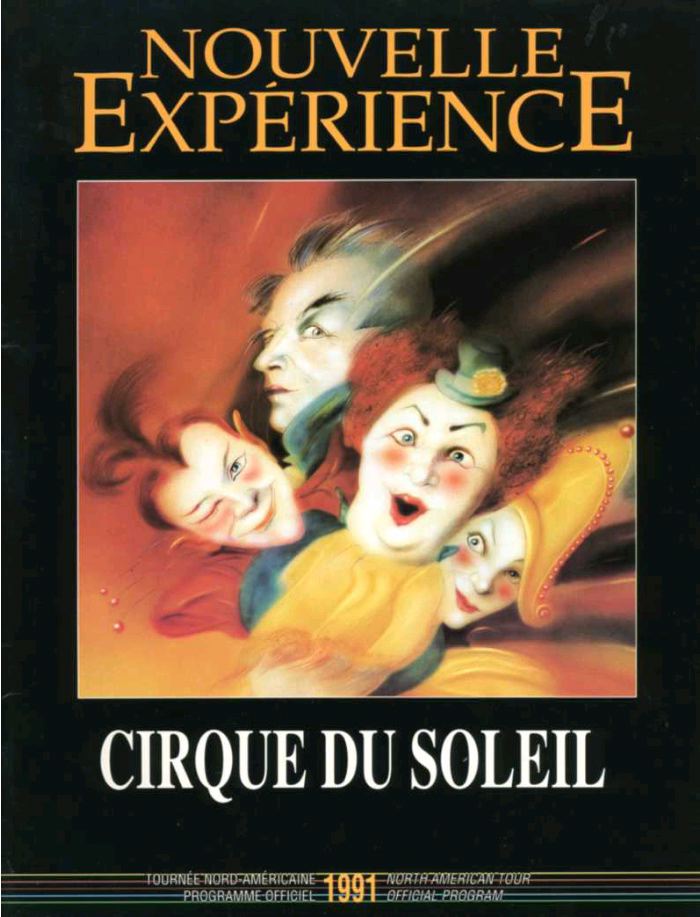


 Franco Dragone was born in Cairano, Italy, and moved to La Louvière, Belgium
at age seven. In the 1970s, he studied theatre at the Belgian Royal Conservatory
of Mons. His earliest theatrical work was explicitly political, woring as a
director of theatre and film in the mode of the commedia dell'arte dramatist
Dario Fo. The theatre works he helped create expressed social situations,
interpreting true stories of the homeless, drug addicts and prison inmates, and
casting the non-actors that shared their stories to perform in the shows.
In the 1980s Dragone came to Montreal, Canada, where Guy Caron, director of
the National Circus School, invited him to conduct workshops with the students
and teachers there. Later, Dragone created, directed and produced a show for
the end of the school year. Guy Laliberté, saw one of these performances in
1984, the same year he formed Cirque du Soleil and as previously mentioned
sought out Guy Caron to join Cirque du Soleil. Caron, in turn, asked Dragone
to join as a creator and the rest is history.
Franco Dragone was born in Cairano, Italy, and moved to La Louvière, Belgium
at age seven. In the 1970s, he studied theatre at the Belgian Royal Conservatory
of Mons. His earliest theatrical work was explicitly political, woring as a
director of theatre and film in the mode of the commedia dell'arte dramatist
Dario Fo. The theatre works he helped create expressed social situations,
interpreting true stories of the homeless, drug addicts and prison inmates, and
casting the non-actors that shared their stories to perform in the shows.
In the 1980s Dragone came to Montreal, Canada, where Guy Caron, director of
the National Circus School, invited him to conduct workshops with the students
and teachers there. Later, Dragone created, directed and produced a show for
the end of the school year. Guy Laliberté, saw one of these performances in
1984, the same year he formed Cirque du Soleil and as previously mentioned
sought out Guy Caron to join Cirque du Soleil. Caron, in turn, asked Dragone
to join as a creator and the rest is history.
